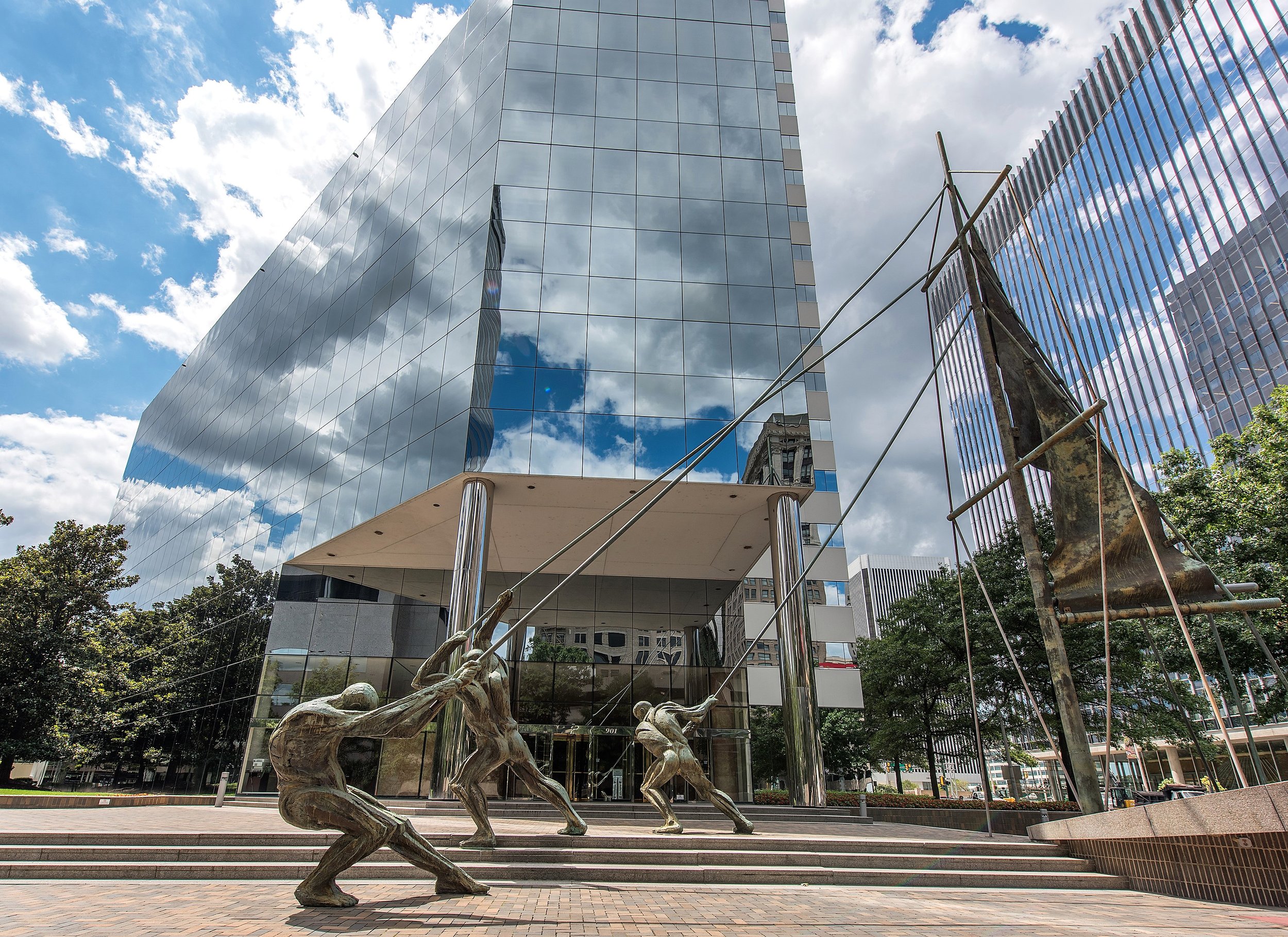
James Center
Bridging History with Modern Design
hISTORY
In 1985, the developers of the 2.5 million square foot James Center, CSX Corporation and Faison Associates, faced a major challenge. Their goal was to design and build a project, which was to make a statement as downtown Richmond’s largest mixed-use project, yet a project which would fit into a site steeped in the history of Colonial and Civil War Richmond.
Richmond was the most important and largest manufacturing and transportation center in the pre-Civil War South. Situated on the falls of the James, the area of James Center was associated with the early canal of the James River Company (which was established at the prompting of George Washington) and the later James River and Kanawha Canal systems, providing a series of canal locks to enable barges to bypass the rapids. These were the most important transportation routes in early 19th century Virginia. Richmond was the port through which goods and materials passed to sailing vessels in the lower James and out to sea.
Most of what is now James Center was occupied by the Great Turning Basin of the James River and Kanawha Canal. This huge man-made body of water was three blocks long, from what is now 8th Street to 11th Street and one block wide, from just inside Cary Street to Canal Street. The Canal and Basin were the transportation focus of the city, and clustered near the edge of these features were tobacco warehouses, flour mills and iron works. The Turning Basin served as a terminal for canal barges to unload, turn around and prepare for their return trips. Tobacco, cotton, flour and coal were exported; English woolens, French perfumes, Brazilian coffee, and East Indian spices were imported.
As construction began for James Center, this history was highlighted when construction workers digging at the site discovered a part of Richmond’s past. Embedded in the earth, 20 feet below the level of Cary Street, they uncovered the remains of several canal boats, apparently abandoned in the canal boat basin more than 200 years ago. Workers eventually recorded the remains of 63 Kanawha Canal boats. An archaeologist was on site during this phase to supervise the salvage and preservation of the unearthed barges. This work took precedence over the all-important construction schedule.
Another challenge to the developers was to integrate the complex with its neighbors, the historic Shockoe Slip Warehouse district and surrounding older traditional office buildings. The impact on the city’s skyline is undisputed. James Center’s three office buildings display a unity of design through their “banded” exteriors. At the same time, the three buildings are unique, in a large part, due to the flexibility of the developer and architect, who strove to give each building an identity of its own. As a result, triangular notches, rounded corners, odd angles, and reflective glass combine in three very different buildings which stand out in sharp contrast to their square and rectangular neighbors. Critics and admirers alike agree that James Center has made a profound impact on Richmond’s architectural story.
James Center’s streetscape is where the developer’s commitment to building on the history of the city and the site in the context of a modern downtown really show through. Every detail of the streetscape contributes to the goal of making James Center a “people place”. Buildings are set back from the street to make room for wide brick-paved sidewalks and trees surrounded by seasonal plantings. The Plaza, one of the focal points of the project, offers ample seating for outdoor lunches, frequent concerts, or quiet relaxation. Not just ordinary benches however, the seating is comprised of stones which lined the walls of the Great Turning Basin, and which have been arranged to resemble a canal lock when viewed from above. Also adorning the Plaza, is a clock tower, featuring revolving figures reminiscent of the workers who toiled on the river barges so many years ago. In fact, all the commissioned pieces of art, several monumental in scale, again respond to the particular history of the site and the character of the surroundings.
This attention to historic preservation and detail on a human scale has made James Center a Richmond landmark, both from an architectural standpoint and an historical one.
